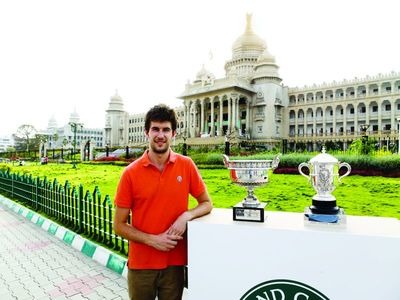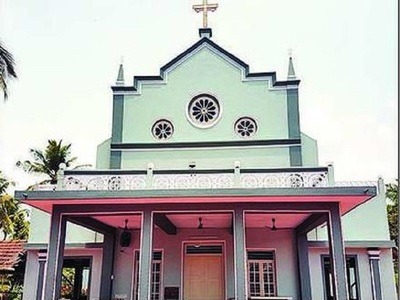Adil Kalyanpur and Abhimanyu Vannemreddy, both Bengaluru boys, made their presence felt in international tennis through Rendez-vous à Roland-Garros, a programme that brings together top junior tennis players in the boys and girls categories at the national level.
This year marks the first edition of the Roland-Garros Amateur Series, which kicks off in Bengaluru today (it is on till May 6).
To mark this, the actual French Open trophies — lifted by many tennis greats made their maiden visit to namma Bengaluru. The trophies glistened exclusively for Bangalore Times, on a bright Saturday afternoon, as they took their place in front of the Vidhana Soudha.
Adrien Groscolas, associate international development of French Federation of Tennis, who is also the caretaker of the cups whilst in India, is the only one allowed to touch them — which he can only do after wearing gloves. Only the winners of the trophies can touch them with bare hands.
As Bengalureans gathered to catch a glimpse of the gleaming cups, Adrien filled us in on the protocol that must be followed while handling them, the significance of bringing the trophies to Bengaluru and why French Open officials are looking East.
What is the significance of choosing Bengaluru to host this tournament?
Bengaluru is an important city for us because it has a long history of racket sports and a lot of sports personalities are from here. Rohan Bopanna, last year’s Roland Garros doubles winner, is from Bengaluru, so it made perfect sense for us to come to such a sports loving city.
What is the protocol when it comes to handling the cups?
Only Roland Garros officials can touch the cups, for which we have to wear gloves. Only the actual winners of French Open can touch the trophies with bare hands. Apart from this, people cannot get too close to the cups, to ensure that they don’t get damaged in any way. Also, when we are travelling, the cups fly with me. We buy additional tickets and the cups are seated next to me on the flight, so that I always have my eyes on them. They cannot be carried as a regular luggage.
What reactions do you get from people when they see the cups?
The first reaction is like what we saw during the shoot in Bengaluru — ‘What is this? I know I’ve seen it somewhere, but why would the trophies be here in Bengaluru?’ Once we explain it to people, they realise, ‘Whoa, it’s a big deal to have the actual trophies here, this close to us’. People then think that this is the cup that Rafa has lifted, and that’s something.
How important is it to bring the trophies to Bengaluru now?
It’s an encouragement, first for the young players of the tournament, because the winners will get to fly to Paris and watch the game at Roland Garros. I think it will be an inspiration for them to see the trophies all week long while they battle it out in the tournament. Perhaps, this will be the start of the next Indian actually lifting this trophy. That’s a bit long-term and optimistic, but I am hopeful of India’s chances in the singles matches.
How conducive is Bengaluru to tennis?
In terms of facilities and infrastructure, Bengaluru is certainly one of the better cities. I will definitely speak of Bengaluru as a tennis city, especially since some of the best Indian tennis players are from here. Bengaluru has a tradition of clay courts and our choice to come here is because there are beautiful clay courts here, just like Roland Garros. It is a city that’s very important for tennis.
How important is India as a country for Roland Garros?
We are very interested in India. First, because there are definitely going to be more good players from India in the future. The country already has good players, like Sania Mirza, Mahesh Bhupathi, Rohan Bopanna and Leander Paes, who have all lifted the cup in the doubles category in the French Open. We are optimistic that an Indian will do so in the singles as well. Yuki Bhambri just broke into the top 100 and is going to be playing in Roland Garros for the first time this year. We are very optimistic about India’s chances, which is why we have taken an interest in organising so many events here, to encourage young kids to pick up rackets.
What can these young players expect to gain from this tournament?
The whole point of the tournament is to give young players the experience of playing a Roland Garros event close to their home. Kids who set foot on these courts may think that if they play well here, they have a shot at getting into a Grand Slam event. That’s pretty inspirational, I think. And that’s what gets those kids to come out on the court and give their best. The courts here are beautifully maintained and there is branding as well, just like in Roland Garros. That’s what sets it apart from other tournaments played through the year.
source: http://www.timesofindia.indiatimes.com / The Times of India / News> City News> Bangalore News / by Dhwani Desai / TNN / April 30th, 2018










